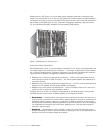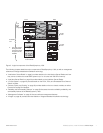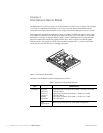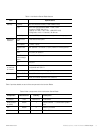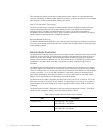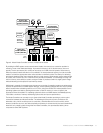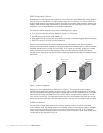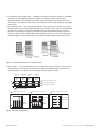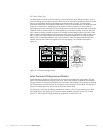
12 BladeSymphony 1000 Architecture White Paper www.hitachi.com
Enhanced Machine Check Architecture provides extensive error detection and address/data path
correction capabilities, as well as system-wide ECC protection. It detects bit-level errors and manages
data corruption, thereby providing better reliability and uptime.
Intel VT Virtualization Technology
The Dual-Core Intel Itanium processor includes hardware-assisted virtualization support that helps
increase virtualization efficiency and broaden operating system compatibility. Intel Virtualization
Technology (Intel VT) enables one hardware platform to function as multiple virtual platforms.
Virtualization solutions enhanced by Intel VT allow a software hypervisor to concurrently run multiple
operating systems and applications in independent partitions.
Demand Based Switching
The Demand Based Switching (DBS) function reduces power consumption by enabling the processor
to move to power-saving mode when under a low system load. The DBS function must be supported
by the operating system.
Hitachi Node Controller
The Hitachi Node Controller controls various kinds of system busses, including the front side bus (FSB),
a PCIe link, and the node link. The Hitachi Node Controller is equipped with three node link ports to
combine up to four server blades. The server blades connect to each other through the node link,
maintain cache coherence collectively, and can be combined to form a ccNUMA type multiprocessor
configuration. The Hitachi Node Controller is connected to memory modules through memory
controllers.
The Hitachi Node Controller provides the interconnection between the two processors, two memory
controllers, three PCI bus interfaces, and connection to up to three other Intel Itanium Server Blades.
Three x 5.3 GB/sec. links can connect up to three other Intel Itanium Server Blades over the backplane
in order to provide 8, 12, or 16 core SMP capabilities. These direct connections provide a distinct
performance advantage by eliminating the need for a cross bar switch found in most SMP system
designs, which reduces memory access latency across server blades.
The Hitachi Node Controller is equipped with three PCIe ports to connect to I/O devices. Two of the
PCIe ports are used to connect to the I/O modules. The remaining port connects to an onboard I/O
device installed on the server blade, which serves a gigabit Ethernet controller, USB controller, and
COM ports.
The Hitachi Node Controller is designed for high performance processors and memory. Throughput
numbers to the processors, memory, and other nodes are listed in Table 3.
Table 3: Bus throughput from the Hitachi Node Controller
Bus Throughput
Processor bus 400 MHz FSB = 6.4 GB/sec.
667 MHz FSB = 10.6 GB/sec.
Memory bus 400 MHz FSB = 4.8 GB/sec.
667 MHz FSB = 5.3 GB/sec.



